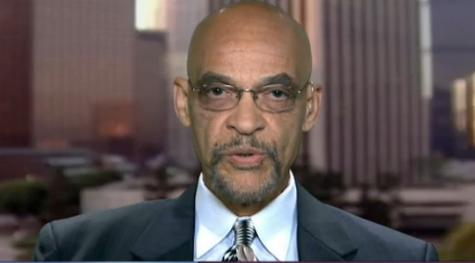Earl Ofari Hutchinson
The instant Starbucks CEO Kevin Johnson announced that Starbucks would shutter the company’s more than 8000 Starbucks for a few hours on May 29 for diversity training the howls began. The diversity training was a PR sop by Starbucks to save face after the embarrassing arrest of the two young Black men at one of its Philadelphia outlets. The diversity training would not absolve Starbucks of racist guilt for the treatment of the Blacks. The diversity training would not make white Starbucks employees or management any more racially sensitive. In other words, the diversity training would not work.
This was clearly a case of a company seemingly wanting to do the right thing when it came to righting a racial wrong getting lambasted from many sides for getting it wrong. So wrong, that many Blacks still raged at Starbucks and claimed that they’d never get another latte from a Starbucks.
There was a point to the criticism, but only a point. There have been countless studies done of corporate initiated diversity programs. Some of the studies have ripped the programs for being too ill-designed, too short, too infrequent, and too ineffective. The even less charitable critics have blasted the programs as just a way to head off potential discrimination lawsuits and pretty up a company’s tarnished image after an embarrassing gender or racial incident.
There’s some truth to that. That is in relation to some of the corporate diversity programs. The biggest criticism across the board of diversity training programs no matter how well intentioned or well-designed is that they are conducted too infrequently and there is too little follow-up to determine if the training actually does what it’s supposed to do. That is make employees and managers any more sensitive to the needs of employees and customers of diverse ethnic groups.
Starbucks officials say that this won’t be the case with their training. That’s it’s not just a one shot, drive-by, couple of hours of listening to a lecture, watching a tape, and then getting back to business. That won’t cut it. The training can only be effective if Starbucks does what it says it will do and that’s have lots of interaction between the employees and management on race and gender issues, conduct effective role play sessions, and then have lots of ongoing follow-up training sessions, and measure the effectiveness of the training.
Starbucks will have to do one more thing and that’s make an all-out commitment to radically ratchet up the number of minority and women managers. This strikes to the heart of the issue and that is how to change the culture of a company to make sure that its employees and managers really do understand that its first duty is to treat all customers like valued customers. It’s second duty is to hire and promote those who are committed to making that happen. The black eye that Starbucks got from the arrest of the two men was not the first time that Starbucks took heat for its alleged ill treatment of customers.
It was slapped with a lawsuit by a dozen deaf patrons at its New York outlets in 2013. They claimed they were mocked, ridiculed, refused service, and in a couple of cases police were summoned. Starbucks seemed to learn from this. It didn’t stop at the usual pro-forma, “we deplore discrimination” statement. It noted that it did have an American Sign Language training and a “Creating a Deaf Friendly Environment” course for employees. That put teeth into its effort to solve an embarrassing problem.
This was a key to understanding why Starbucks moved fast to quell the furor over having two young Black men hauled out of an outlet in heavily Black Philadelphia in handcuffs and then having the tape of it blow up with more than 10 million views. Then watch as the complaints against the manager that called the cops piled up against her of other prior bigoted behavior toward Black employees and customers.
The swift damage control meant a vow to make radical changes in employee training, community outreach, and more funding for minority community projects. This was capped by the announcement to close all Starbucks nationwide for a day for ramped up employee and management diversity and racial sensitivity training. This was a big, sweeping and unprecedented corporate reaction to the blatant racial profiling of the Black men. It was more.
It represented a first for a major corporation in the shut-down of almost its entire operation for a day, at the cost of tens of millions in revenue, in response to blatant racism. Starbuck’s action provides a long-awaited template for how to decisively confront racism and the racist stereotypes that damage so many. Almost certainly, other corporate biggies are watching closely to see just how this all turns out. So, yes, Starbucks got it right on diversity, let’s see if continues to get it right.
Earl Ofari Hutchinson is an author and political analyst. His forthcoming book is, Why Black Lives Do Matter (Middle Passage Press). He is a weekly co-host of the Al Sharpton Show on Radio One. He is the host of the weekly Hutchinson Report on KPFK 90.7 FM Los Angeles and the Pacifica Network.

